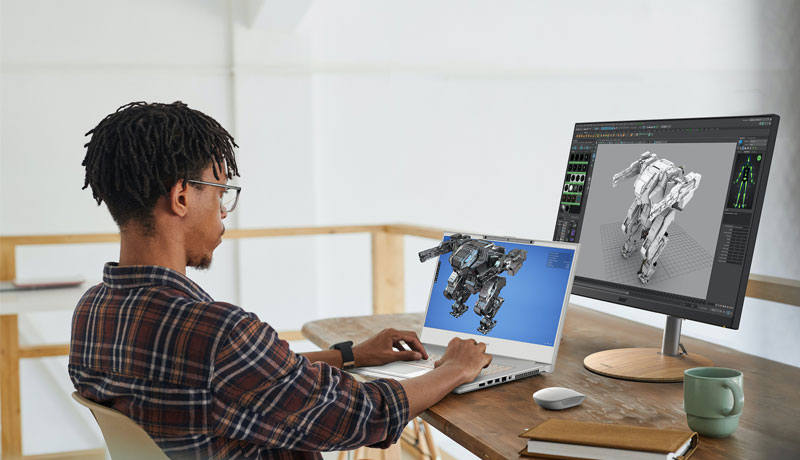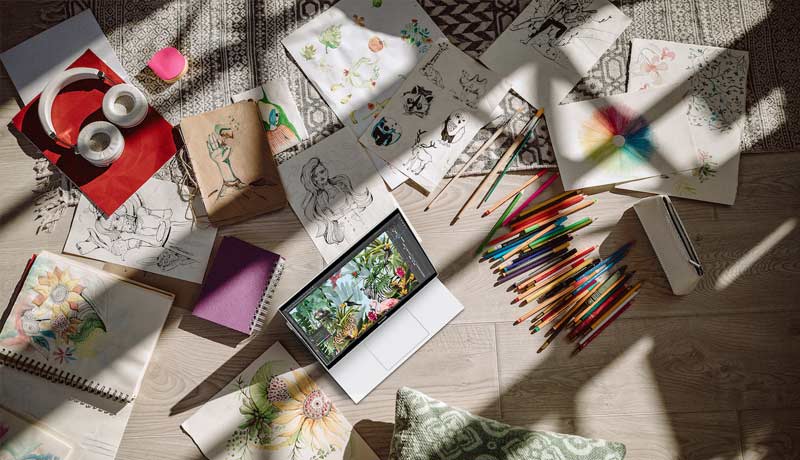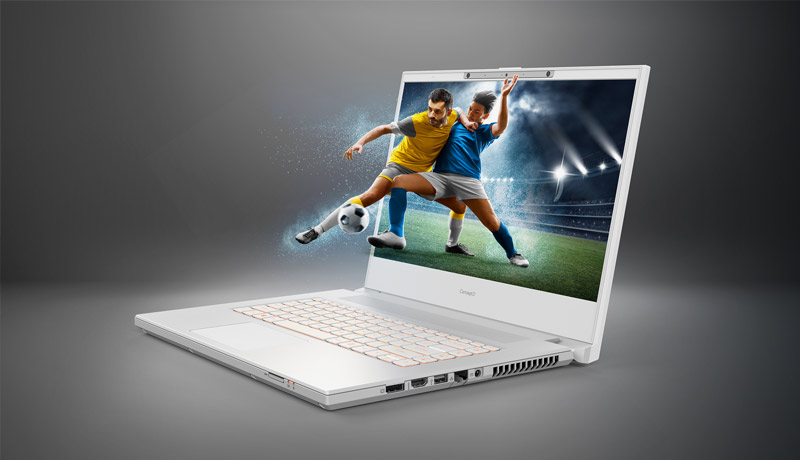
Acer has unveiled the ConceptD 7 SpatialLabs Edition laptop (CN715-73G), which offers designers and developers eye-popping, glasses-free stereoscopic 3D.
Acer SpatialLabs, a set of optical, display, and sensory technologies with real-time rendering capabilities, aids developers in delivering a glasses-free stereoscopic 3D experience. It’s also powered by the NVIDIA Studio ecosystem, which includes NVIDIA GeForce RTX 3080 Laptop GPUs with special driver technology that boosts the speed and dependability of creative programs. Simply said, the new ConceptD 7 is a superb laptop for 3D modeling as well as for developers.

A 15.6-inch and a 16:10 variant of the ConceptD 3 Ezel were also introduced. “Acer is dedicated to breaking the barriers between people and technology,” said Jerry Kao, Co-COO, Acer Inc.
He added, “SpatialLabs is a great example of how we try to let that goal guide everything we do. From product and architecture CAD to projects with 3D graphics, designers can finally see their 3D creations in 3D during the workflow to make better judgments, rather than having to wait till afterward. Developers are also empowered with new ways to tell stories and bring their ideas to life.”

The ConceptD 7 SpatialLabs Edition laptop has up to an 11th Gen Intel® CoreTM i7 processor, an NVIDIA® GeForce RTXTM 3080 Laptop GPU, up to 64 GB of DDR4 memory, and up to 2 TBs of NVMe PCIe SSD storage to render 3D models in real-time. All of this hardware powers a PANTONE®-validated UHD 4K display with a wide range of colour technologies that covers 100% of the Adobe RGB colour gamut and earns a Delta E2 colour accuracy certification, assuring that what creators see on the stereoscopic 3D laptop’s screen is precisely what they get.
A set of stereo cameras sits above the screen, recording the user’s eye and head movements in order to display stereoscopic 3D graphics. This is performed by projecting two slightly different images through an optical lens bonded to the display screen, each refracted to a different eye. This technique can happen instantly because of real-time rendering technologies: every time a user rotates their head, the stereoscopic 3D image adjusts as though the user is gazing around it. The computer also features a collection of AI technologies that handle jobs like stereo picture synthesis, which allows users to turn 2D video into stereoscopic material.

Designers can see their concepts come to life in real time right out of the box with SpatialLabs. Creators may easily convert their 3D models to stereoscopic 3D by uploading them to the SpatialLabs Model Viewer, where they can adjust lighting, texturing, and HDRI backgrounds to obtain the optimal presentation settings. In addition, SpatialLabs Model Viewer add-ons for eight 3D software suites, including Autodesk Fusion 360, Rhinoceros, and Zbrush, are now available, allowing models created in these applications to be transferred to the SpatialLabs Model Viewer for stereoscopic 3D inspection with a single click.

The laptop can also be used with an enlarged 2D monitor, allowing users to create or edit the content on a 2D monitor and then view any changes in stereoscopic 3D on the SpatialLabs device in real time. This improves workflow greatly by speeding up the process of finding design flaws: Product designers can use the SpatialLabs Model Viewer to obtain a sense of how an item will look before investing the time and resources required to print or tool it. Customers may visualise the design to make sure it meets their needs, and managers and team members can provide more detailed input at each stage of the project.
Acer’s proprietary solution SpatialLabs Go has also been updated with AI technology, allowing users to create stereoscopic 3D content from most 2D content that can be displayed in full-screen, such as photographs, videos, basic games, and even video conferences.
Acer unveiled the SpatialLabs developers’ programme for Unreal Engine in May 2021, a real-time 3D platform that empowers developers and teams to communicate and iterate faster than ever before, without sacrificing quality or scalability. Acer introduced the SpatialLabs Developer Site in conjunction with the launch of the ConceptD 7 SpatialLabs Edition laptop, where developers can gain access to all tools, including the Unreal Engine plug-in and support for Ultraleap Hand Tracking. Users can utilise hand gestures instead of a mouse or a hand-held joystick to input commands using Ultraleap’s hardware and software. This enables a significantly more intuitive experience and reduces the need for users to touch the device itself, which is particularly helpful for “high-traffic” displays, such as in a museum or show room.

As part of the program, developers are working with Acer on a range of innovative content, applications and projects—all created with a ConceptD 7 SpatialLabs Edition laptop. Some examples include:
Acer has added several new models to its ConceptD 3 range, including a 16-inch clamshell model (CN316-73G) with a 16:10 aspect ratio screen and a 15.6-inch convertible model (CC315-73G) with up to a Wacom EMR pen. There’s also a ConceptD 3 Pro (CN316-73P) and a ConceptD 3 Ezel Pro (CC315-73P), both with an Intel® CoreTM i7 processor capable of 4.6 GHz and an NVIDIA T1200 Laptop GPU.
All of the new ConceptD 3 laptops have a strikingly modern look, with a spotless white MAO (Micro-Arc Oxidation) coating that protects the device’s all-aluminum MgAl chassis against stains and abrasions. Following that, a PANTONE®-Validated display with a Delta E2 color-accuracy certification ensures that all of the small details appear just as the creator intended.